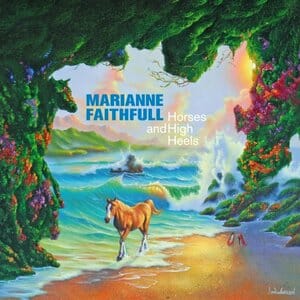Marianne Faithfull: Horses and High Heels

Marianne Faithfull’s new album begins with a particularly well-chosen cover. She kicks off Horses and High Heels with the ominous chords and spiritual misgivings of “The Stations,” by The Gutter Twins (better known as Greg Dulli and Mark Lanegan). With its ominous pace and prickly guitars, it’s a perfect showcase for Faithfull’s distinctive voice, a gravelly instrument that locates new trials and transgressions in these lyrics. “Oh mama, ain’t no time to fall to pieces,” she sings in that beautifully scarred rasp, as though steeling herself against sins too dark for salvation.
That song is immediately followed by “Why Did We Have to Part,” which Faithfull co-wrote with French composer Laurent Voulzy. At first it sounds almost banal by comparison, with its plainspoken lyrics and direct observations. “I remember the night when we met each other, it was a very long time ago,” she sings. “we both have changed for the better, we are so much kinder now, I know.” Yet, as the song progresses, Faithfull invests that title question with startling despair, rendering divorce in terms of horrifying regret.
-

-

-

-

-

-

-

-

-

-

-

-

-

-

-

-

-

-

-

-

-

-

-

-

-

-

-

-

-

-

-

-

-

-

-

-

-

-

-

-








































